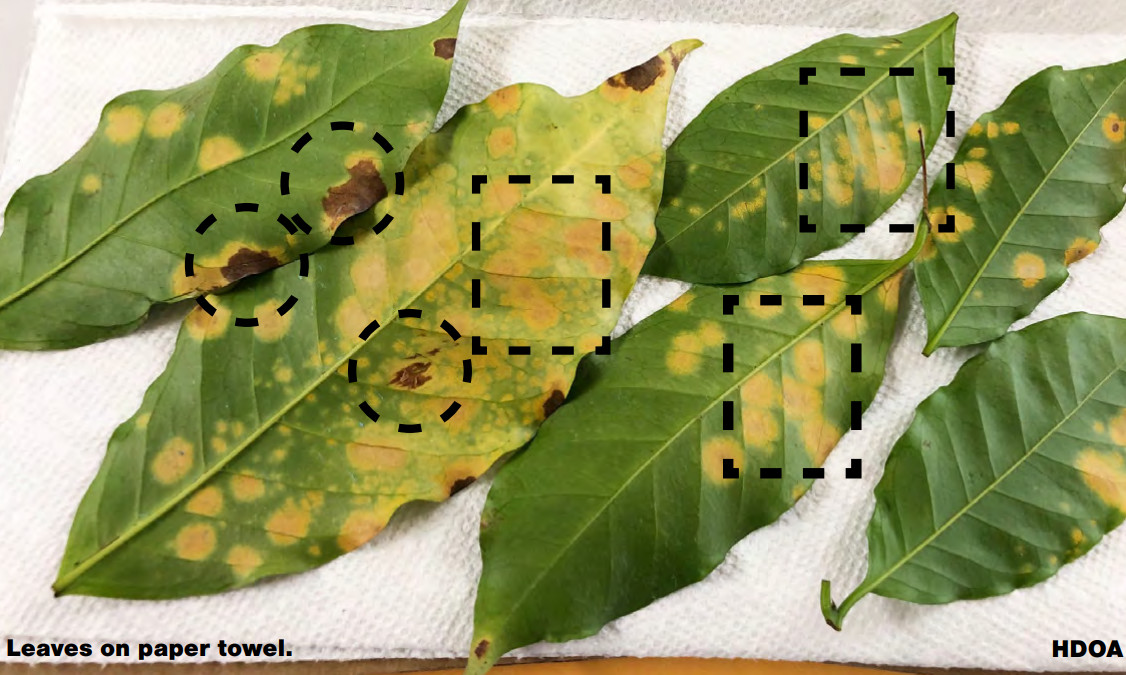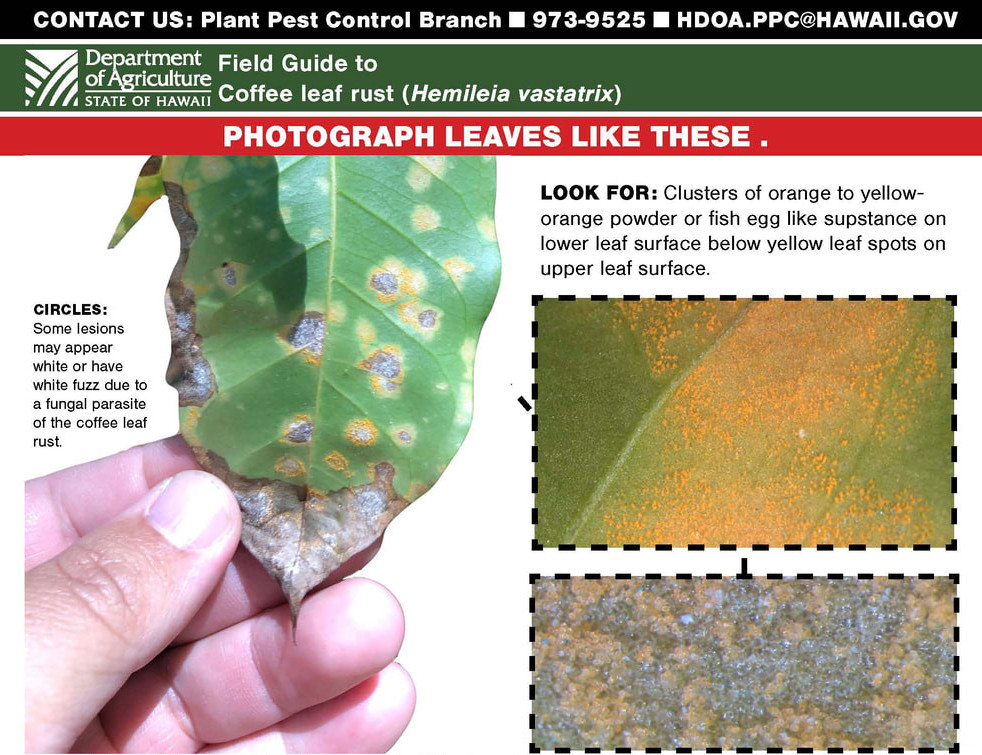(BIVN) – Coffee leaf rust, the devastating coffee plant pest known to growers around the world, has been found for the first time in the Kona coffee growing region on Hawaiʻi island.
The U.S. Department of Agriculture National Identification Services confirmed the pathogen in samples that were collected on October 31 by a Kona coffee grower in Hōlualoa. Meanwhile, suspected samples from Hilo that were mentioned in an earlier news release from Hawaiʻi agriculture officials tested negative for CLR.
A few days before CLR concerns were raised on Hawaiʻi island, the coffee pest was detected for the first time in the State of Hawaiʻi, confirmed in the Haiku area of Maui. CLR has not been detected on other islands.
“Coffee is one of Hawai`i’s signature crops, of which production was estimated to be $54.3 million in 2019,” said Phyllis Shimabukuro-Geiser, chairperson of the Hawai`i Board of Agriculture. “As surveys continue across the state, the Hawai`i Department of Agriculture is preparing to establish interim rules that will hopefully prevent the spread of the fungus to uninfested islands.”
From the Hawaiʻi Department of Agriculture:
CLR can cause severe defoliation of coffee plants. Infected leaves drop prematurely, greatly reducing the plant’s photosynthetic capacity. Vegetative and berry growth are reduced depending on the intensity of rust in the current year. Long-term effects of rust may include dieback, which can have a significant impact on the following year’s yield, with some researchers estimating losses between 30 percent and 80 percent.
The first observable symptoms are yellow-orange rust spots, appearing on the upper surface of leaves. On the underside of the leaves, infectious spores appear resembling a patch of yellow- to dark orange-colored powder. These young lesions steadily increase in size with the center of the lesion turning necrotic and brown, with the infection eventually progressing up the tree. CLR may also infect young stems and berries.
While there are fungicides that may be used to help control the fungus, one of the key factors to any pest management program is good sanitation practices. Regular pruning and training of the coffee tree helps to prevent over-cropping and maintain a healthy field. These practices help to improve air circulation and also to open up the canopy to allow proper fungicide spray coverage. Good weed control is an important factor as it keeps competition for vital nutrients low, thereby reducing the susceptibility to the rust.
CLR, Hemileia vastatrix, was first discovered in Sri Lanka in 1869 and is now found in the major coffee-growing regions of the world, including Southeast Asia, Africa, and Central and South America.
The Hawaiʻi Department of Agriculture Advisory Committee on Plant and Animals will meet at 1:30 p.m. on Friday, Nov. 13, in order to “consider an interim rule to restrict the movement of coffee plants and coffee plant material from islands found to have CLR to islands on which the fungus has not been detected.” Information on the meeting via Zoom is available here.
The ag department’s Plant Pest Control Branch has prepared this “new pest advisory” on CLR.
To report possible coffee leaf rust infestations on any island, call HDOA’s Plant Pest Control Branch at (808) 973-9525.



by Big Island Video News5:10 pm
on at
STORY SUMMARY
HAWAIʻI ISLAND - Samples from Hilo that were mentioned in an earlier news release tested CLR negative, but the pathogen was confirmed in samples from Hōlualoa.